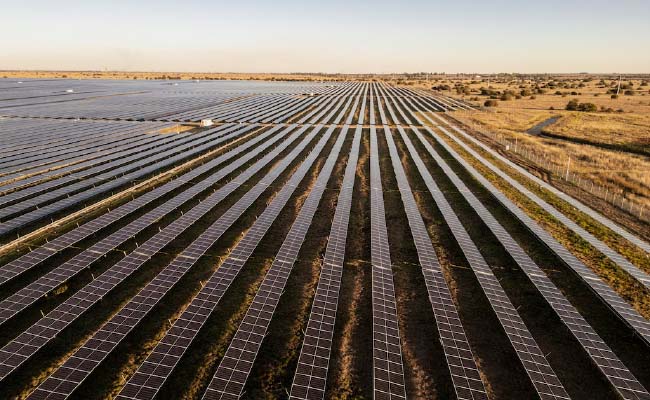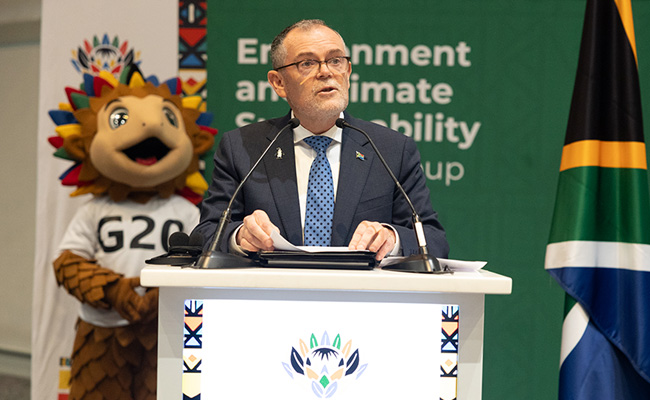An old African proverb says that “he who waits for perfect conditions will never plant a seed”.
Certainly, South Africa’s financial sector is used to waiting for certainty – perfect data, complete models, fully formed regulations – before taking action.
But when it comes to investing in nature, waiting is the greatest risk of all. Nature will not wait for us to be ready.
That may sound dramatic, but more than $44-trillion in global GDP depends directly on nature. Yet the estimated $700bn annual funding gap to halt biodiversity loss is not just an environmental crisis, it is a financial, social and economic emergency.
This urgency is still not fully recognised by the financial sector. For investors, asset managers, and financial institutions, this is our defining moment. The question is no longer whether we should invest in nature. It is whether we can afford not to.
Sanlam Investments, as the first South African financial institution to commit to the Taskforce on Nature-Related Financial Disclosures, is actively integrating nature into its financial decision-making, not as a compliance requirement, but as a strategic imperative.
So what happens if we don’t act?
For decades, the commonly accepted view was that nature is an infinite resource – free, abundant, and always available.
But if this is incorrect, the picture quickly becomes one where food prices soar because pollinators vanish, water shortages cripple industries and cities, and extreme weather becomes uninsurable, pushing families and businesses into financial ruin.
Soon enough, global supply chains would collapse as nature’s regenerative systems – forests, fisheries, farmland – break down. Economic instability and social unrest rise, driven by food insecurity, mass migration and resource conflict.
Sadly, this isn’t hypothetical; it’s already happening.
In South Africa, we have lived through the 2018 “Day Zero” water crisis in Cape Town, we’ve seen key fisheries collapse, and we’ve faced rising floods and heatwaves across KwaZulu-Natal and the Eastern Cape, damaging infrastructure and disrupting ports.
Extrapolate that to a global scale, where biodiversity loss becomes a financial stability issue, a human security issue and an economic survival issue.
A strategic response
History shows the finance industry often responds too slowly to systemic risks. Climate change is one example – many institutions ignored the warnings until stranded assets and regulatory pressures forced a response. We cannot make the same mistake again.
Already, resource scarcity is driving up operational costs. Agribusinesses are experiencing lower yields due to drought and soil degradation. Water scarcity is threatening the profitability of beverage, energy and industrial sectors.
And, as nature degrades, supply chains become costlier and less predictable. The fishing industry is expected to shrink by 30% by 2050, while deforestation is reducing our planet’s ability to absorb carbon.
Insurers and lenders are exposed to this, as the rising risks make parts of the economy uninsurable. Environmental degradation is increasing default risks across agriculture, tourism, and real estate.
Regulators have responded by requiring disclosure of nature-related financial risks, which will affect access to capital for non-compliant companies.
All of which underscores that if the financial sector fails to act, it will face lower margins, higher volatility and stranded assets.
What ought to happen is that firms should treat nature-related risks as they do credit or inflation risks – factored into valuations, portfolio construction and asset pricing.
First, financial institutions must assess their exposure to biodiversity loss across portfolios. Sectors reliant on natural capital – agriculture, forestry, fisheries, water-intensive manufacturing – must be evaluated for resilience.
Second, financial models must reflect the true cost of natural capital depletion. Traditional methods often ignore biodiversity impacts. By applying scenario analysis and risk-adjusted discount rates, asset managers can account better for long-term consequences.
Third, the financial sector must direct capital to nature-positive investments. This is not just risk mitigation; it’s a growth opportunity. Companies prioritising regenerative agriculture, ecosystem restoration and water efficiency are likely to outperform over the long term.
First mover advantage
While biodiversity loss is a crisis, it also opens the door for economic transformation. Early movers will benefit, while late adopters will lose out.
In our company, we are creating financial mechanisms that support returns and resilience, from sustainable agriculture and water management to green infrastructure and biodiversity-linked insurance. We are exploring biodiversity credit markets, and monetising services like carbon sequestration and water purification. These are real tools that will soon form the future of finance.
It’s clear that governments cannot close the biodiversity financing gap alone. The private sector – particularly asset managers, insurers and banks – must lead. This is not just an ESG issue; it’s a matter of financial prudence, economic stability and long-term value creation.
The risk assessments discussed above should be embedded, and nature-positive financial products should be developed. Because as much as we might like to believe this is just an ecological issue, it is also deeply financial.
Thabang Selota is an ESG and impact analyst at Sanlam Investments.
Top image: Rawpixel/Currency collage.
Sign up to Currency’s weekly newsletters to receive your own bulletin of weekday news and weekend treats. Register here.












